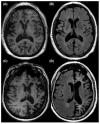Epilepsy, Immunity and Neuropsychiatric Disorders
- PMID: 35794773
- PMCID: PMC10514543
- DOI: 10.2174/1570159X20666220706094651
Epilepsy, Immunity and Neuropsychiatric Disorders
Abstract
Several studies have focused on the emerging role of immunity and inflammation in a wide range of neurological disorders. Autoimmune diseases involving central nervous system share well defined clinical features including epileptic seizures and additional neuropsychiatric symptoms, like cognitive and psychiatric disturbances. The growing evidence about the role of immunity in the pathophysiologic mechanisms underlying these conditions lead to the concept of autoimmune epilepsy. This relatively-new term has been introduced to highlight the etiological and prognostic implications of immunity in epileptogenesis. In this review, we aim to discuss the role of autoimmunity in epileptogenesis and its clinical, neurophysiological, neuroimaging and therapeutic implications. Moreover, we wish to address the close relationship between immunity and additional symptoms, particularly cognitive and psychiatric features, which deeply impact clinical outcomes in these patients. To assess these aspects, we first analyzed Rasmussen's encephalitis. Subsequently, we have covered autoimmune encephalitis, particularly those associated with autoantibodies against surface neuronal antigens, as these autoantibodies express a direct immune-mediated mechanism, different from those against intracellular antigens. Then, we discussed the connection between systemic immune disorders and neurological manifestations. This review aims to highlight the need to expand knowledge about the role of inflammation and autoimmunity in the pathophysiology of neurological disorders and the importance to early recognize these clinical entities. Indeed, early identification may result in faster recovery and a better prognosis.
Keywords: Epilepsy/seizures; autoimmune encephalitis; immunity; immunotherapy; neuro-inflammation; neuropsychiatric disorders.
Copyright© Bentham Science Publishers; For any queries, please email at epub@benthamscience.net.
Conflict of interest statement
The authors declare no conflict of interest, financial or otherwise.
Figures


References
-
- Steriade C., Britton J., Dale R.C., Gadoth A., Irani S.R., Linnoila J., McKeon A., Shao X.Q., Venegas V., Bien C.G. Acute symptomatic seizures secondary to autoimmune encephalitis and autoimmune-associated epilepsy: Conceptual definitions. Epilepsia. 2020;61(7):1341–1351. doi: 10.1111/epi.16571. - DOI - PubMed
-
- Scheffer I.E., Berkovic S., Capovilla G., Connolly M.B., French J., Guilhoto L., Hirsch E., Jain S., Mathern G.W., Moshé S.L., Nordli D.R., Perucca E., Tomson T., Wiebe S., Zhang Y.H., Zuberi S.M. ILAE classification of the epilepsies: Position paper of the ILAE commission for classification and terminology. Epilepsia. 2017;58(4):512–521. doi: 10.1111/epi.13709. - DOI - PMC - PubMed
-
- Dubey D., Singh J., Britton J.W., Pittock S.J., Flanagan E.P., Lennon V.A., Tillema J.M., Wirrell E., Shin C., So E., Cascino G.D., Wingerchuk D.M., Hoerth M.T., Shih J.J., Nickels K.C., McKeon A. Predictive models in the diagnosis and treatment of autoimmune epilepsy. Epilepsia. 2017;58(7):1181–1189. doi: 10.1111/epi.13797. - DOI - PubMed

